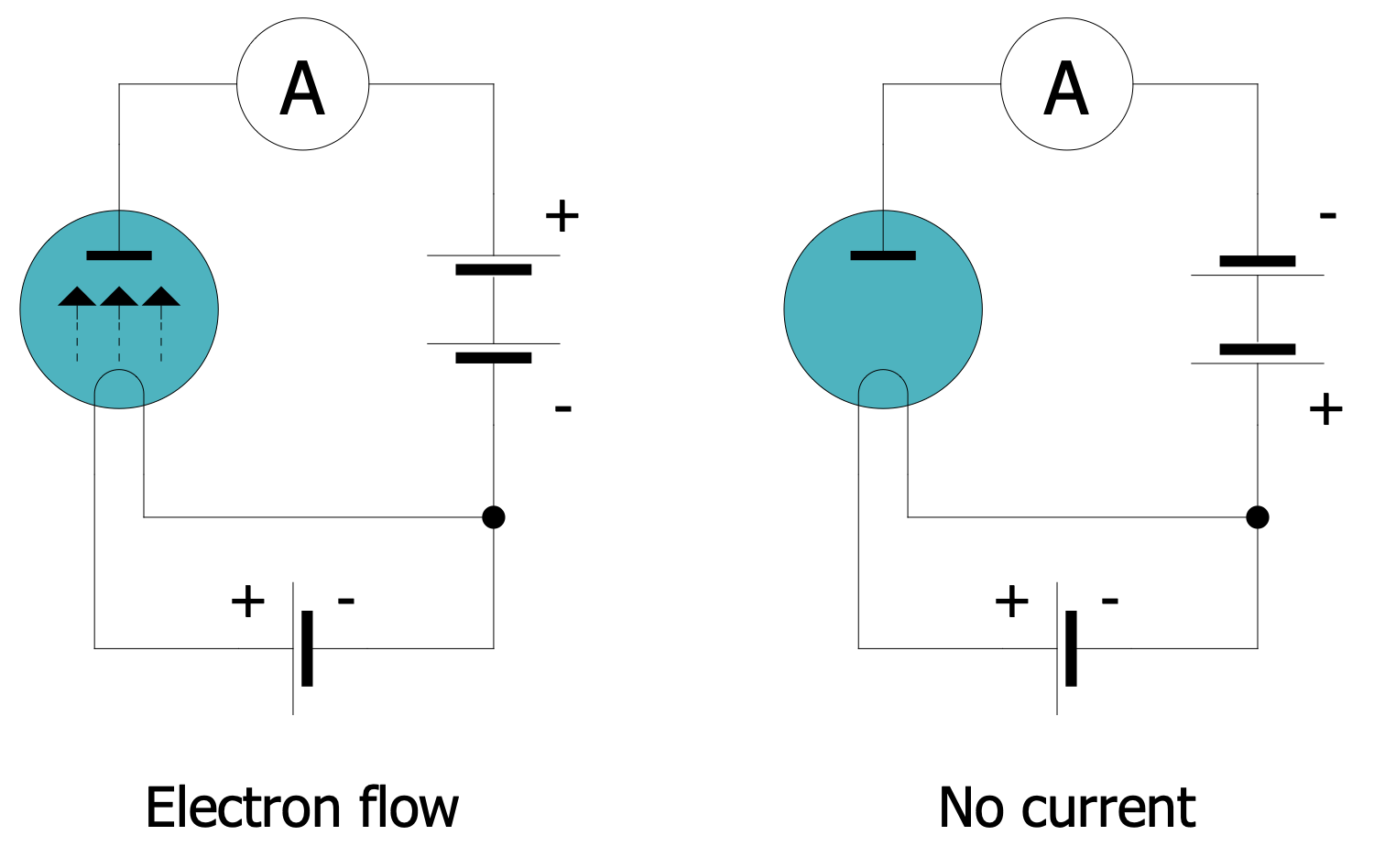Electron Tube Circuit
An electron tube or vacuum tube is an electronic device consisting of a sealed glass or metal container with a vacuum or filled with ionized gas at low pressure, in which the electrons flow is emitted. The electron tube has two electrodes: cathode and anode or plate. The cathode is usually a metallic electrode and a source of a stream or a cloud of electrons, which it emits at the heating. One says that the cathode causes thermionic or electron emission. Then, the emitted electrons are attracted, accelerated by the positively charged anode, and form the current through the tube. In turn, the negatively charged cathode repels and slows the electrons. The higher the voltage is, the more electrons flow to the anode. At the same time, the low-energy electrons are repelled by the cloud of electrons and return to the cathode.
The movement of electrons is controlled by an electric field, a magnetic field, or both. The magnetic field is produced outside the tube by an electromagnet or a permanent magnet. The electric field is created by the application of a voltage between the electrodes in the tube. An electric field can change the path of the electron stream, speed, and the number of flowing electrons. While the magnetic field is used to control the movement of the electrons from one electrode to another.
The electron tubes are used in various electronic circuits to control the flow of electrons. They amplify a weak current, generate oscillating radio-frequency (RF) power for radio and radar, convert an alternating current (AC) to direct current (DC), create images on a television screen or computer monitor. For a long time, vacuum tubes were used in a variety of electronic devices with low power and low frequency, in radios, high-fidelity sound systems, computers, transmitters, and so on. Currently, they are used in magnetrons, klystrons, gyrotrons, photoelectric cells, neon and fluorescent lamps, gas tubes used to produce luminous discharges, and X-ray tubes, which maintain a high voltage between the cathode and the anode. The cathode-ray tubes are also electron tubes producing electron beams to strike a screen in order to produce pictures in oscilloscopes or television displays.

Example 1. Electron Tube Circuit
Since the invention of solid-state devices called transistors, electron tubes have been rarely used. They are still used only on high power levels and frequencies, in high-power transmitters, high-end audio equipment, radars, X-ray machines, microwave ovens, and some oscilloscopes. In addition, currently, the power and efficiency of the electron tubes are improved due to modern innovations, using superior materials like diamond, pyrolitic graphite, rare-earth magnets, etc. The transistors are the semiconductor equivalent to the electron tubes at low power levels. They perform much the similar functions as tubes, control the flow of electrons in a circuit through another flow of electrons or a voltage.
Example 2. Edison Effect
Striving to find an effective software to design the Electron tube circuit, turn attention to ConceptDraw DIAGRAM software extended with the unique Electron Tube Circuits solution. It offers useful drawing tools, illustrative samples, and a collection of libraries with vector design elements — vacuum tubes, electron tubes, gas-filled tubes, diodes, sockets, and many more to create electrical circuits without any effort.
Example 3. Electron Tube Circuits Solution in ConceptDraw STORE
The Electron Tube Circuits samples you see on this page were created in ConceptDraw DIAGRAM software using the drawing tools of the Electron Tube Circuits Solution. These examples successfully demonstrate the solution's capabilities and professional results you can achieve using it. An experienced user spent 5-10 minutes creating each of these samples.
Use the drawing tools of the Electron Tube Circuits solution to design your own Electron Tube Circuits Infographics quick, easy, and effective.
All source documents are vector graphic documents. They are available for reviewing, modifying, or converting to a variety of formats (PDF file, MS PowerPoint, MS Visio, and many other graphic formats) from the ConceptDraw STORE. The Electron Tube Circuits Solution is available for ConceptDraw DIAGRAM users.

